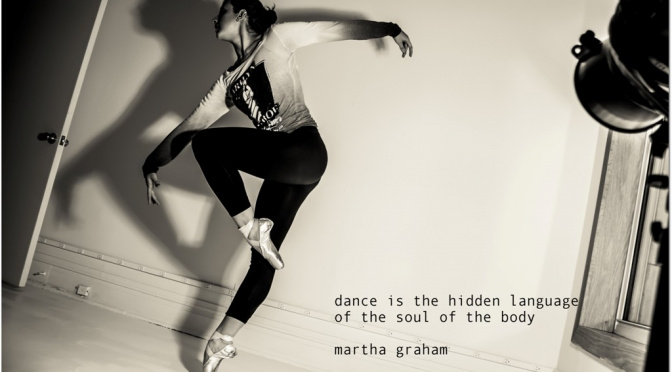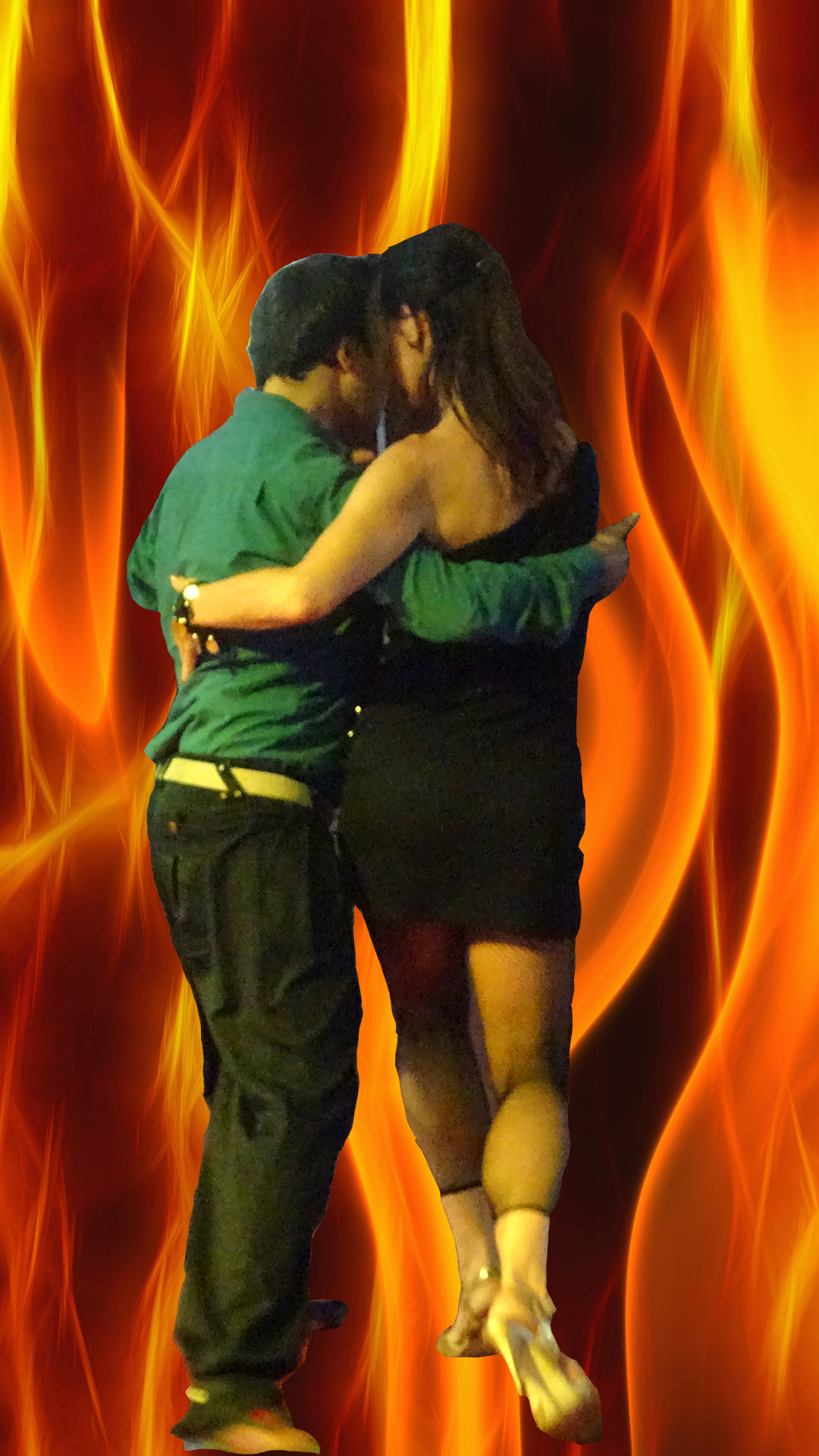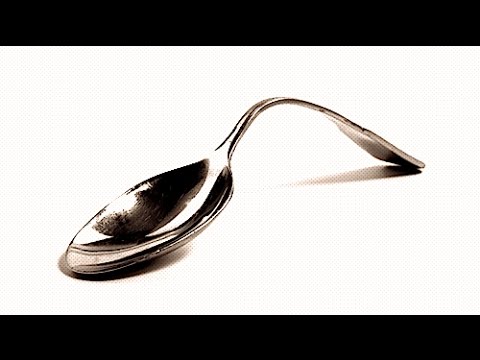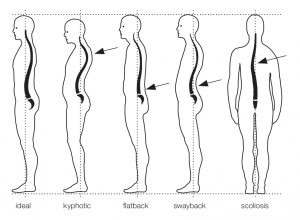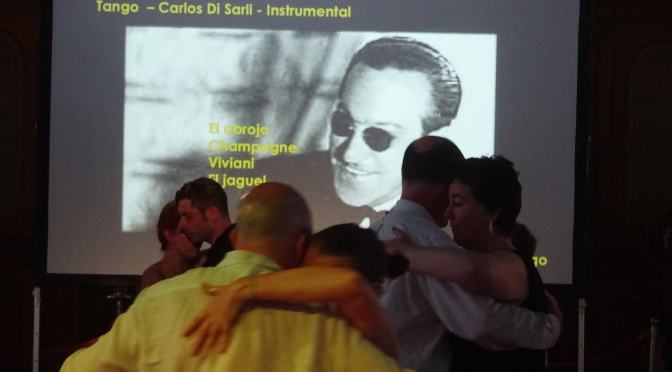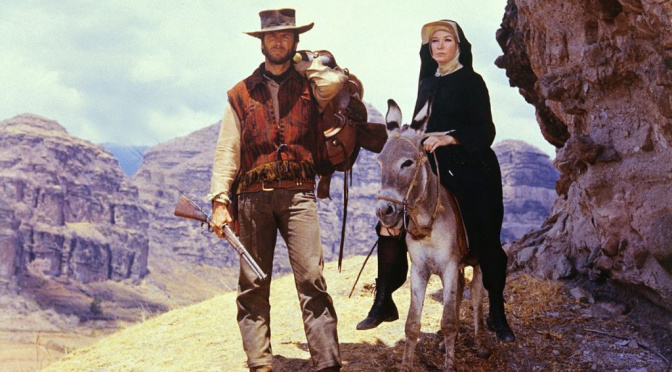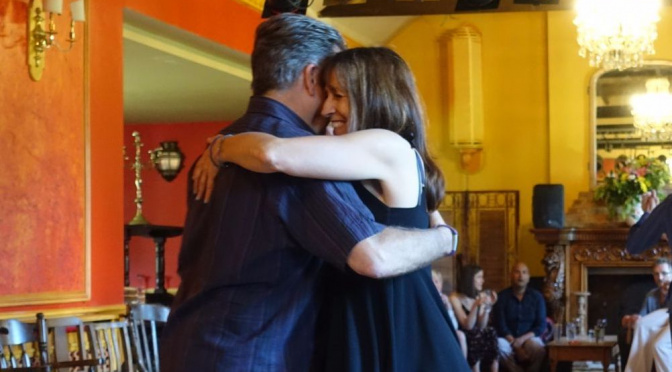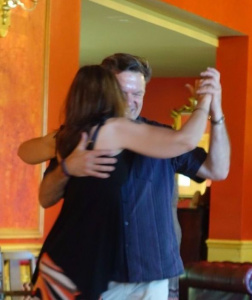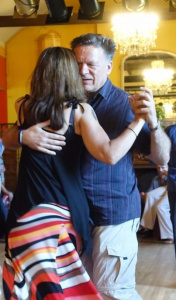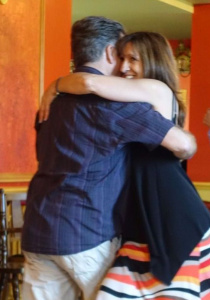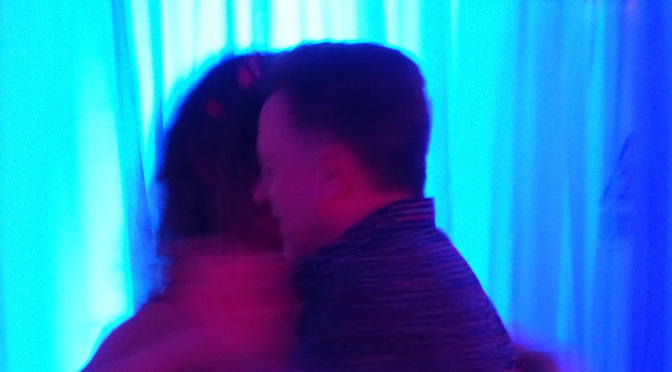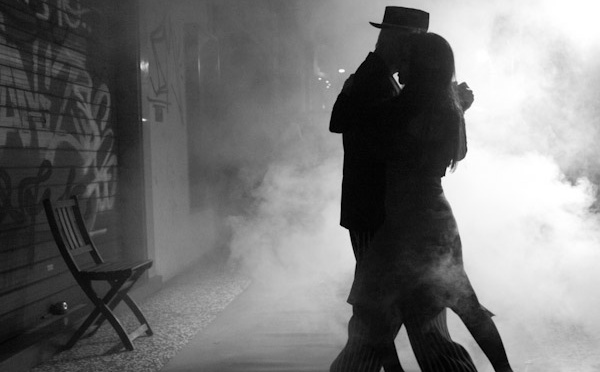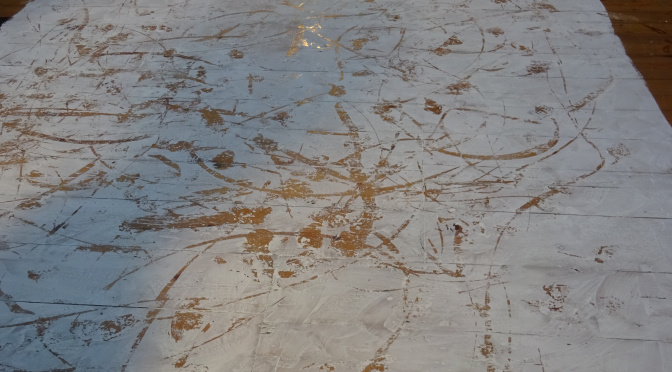Last weekend I had the chance to dance a tanda with a goddess – someone so far advanced of me in every aspect of tango that we do indeed inhabit different realms.
And true to the tango leader wimpiness that is alas so very common – even though she told me days in advance that at this milonga she wanted to dance with me – I still did not have the courage to actually ask her. I am such a mortal.
Fortunately for me in the end she gave up waiting and cast a mirada in my direction that made it very clear that if I didn’t actually dance with her this second I was very likely to be vaporized. Or worse.
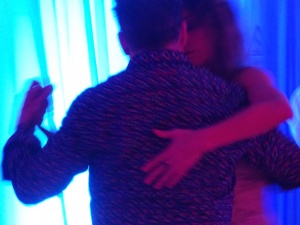
This was not my best moment – goddesses like to be worshipped and for her to have to initiate the invitation was more than a little inappropriate.
After this hopeless start I am pleased to say that for me this tanda was a whole new experience.
During the sleepless nights I had had before the milonga I had thought of what to do – how to approach this opportunity.
I made some fairly sensible plans and approaches ..
1. Do not pretend to be something I am not
Legends are full of people imitating gods, venturing too close to the sun and to their domain – and coming to gruesome ends.
Unfortunately being in the arms of a goddess does not make you a god – just terrified.
Be quiet, still and as confident as you can be – and never rush anything. In fact what you think of as fast is painfully slow to a goddess – just as what you think of as slow is kind of average. They are physically so adept that you are best to move at a pace that is the most appropriate for you – do try to vary the emotional landscape using musicality, compression and step length but stay in your executable zone as much as you can so that your lines are clean.
Goddesses don’t like messy lines – they are a sign of mortality.
2. Concentrate on the music
I have thought for a while now that the conversations people describe in tango are often not between the leader and the follower but instead between the follower and the music.
When you are with a goddess you have insufficient shared vocabulary to say anything other than the dancing equivalent of “Hello – what’s your name?”.
But she has an almost unlimited way to talk to the music in the most complex and sophisticated ways – so try to give them space and to stay out of their way. Then listen like you have never listened before. Listen with everything you have – apart from letting the music in your ears are nothing to do with it.
Listening to the way a goddess expresses the emotions of tango is a powerful shot of understanding. Don’t miss out.
3. Don’t be too simple
Many well meaning teachers explain to us student leaders that a good follower will enjoy a beautiful walk more than a poorly executed complex figure.
This is true – the problem when you are with a goddess is that ‘beautiful’ has just been radically redefined. Me leading a goddess to walk for even one whole bar is quite likely to result in her conjuring up a taxi to rescue her from such a painful experience.
So find the middle ground. Of course a mortal should never try to back sacada a goddess – but if you love your close embrace volcadas you shouldn’t shy away from them just because they are off axis. The sensitivity and control in the axis of a goddess and their ability to suddenly become virtually weightless in your arms are a complete joy to experience – so don’t miss out by safely sticking to a true beginners vocabulary.
4. Allow her to look like a goddess
Remember that she is actually taking a risk here.
If I don’t give her her axis, if am not musical – if I block her from moving how she wants to then she is going to look mortal – and that for her is hell.
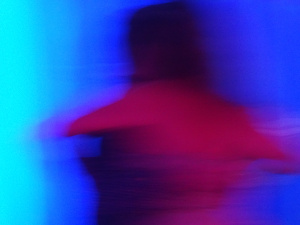
So above all let her be feminine elegant and beautiful – let her move in the way that only a goddess can.
5. Try to remember to breathe
Life after a tanda with Her
There are risks of course. Every tanda ends and once you have danced with a goddess dancing with mortals is always going to feel different.
The optimist in me tries to think of this as progress. The realist sees a narrowing corridor down which i must progress – with fewer and fewer possibilities.
My goal now is to find a wannabe goddess practise partner who has had the same all too brief encounter with a god and is as motivated as I am to experience it again. To find someone that that wants to work and work and work so that they can again tempt the god to spend just 12 minutes in their arms.
I don’t want to push the metaphor too hard but i have been quietly thinking how mortals have tried to appease the gods over the millennia and how they have attracted their favours.
Unfortunately I don’t have the skill or strength to build a temple. Sacrifices are basically out of the question. I am no prophet and I lack the ability to move mountains or to part the waters.
So I am pinning my foolish mortal hopes on nice chocolates and flowers.
And that practise partner.



